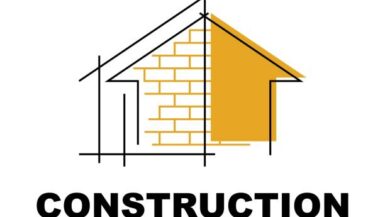Introduction
When it comes to financing construction projects, one crucial aspect to consider is the construction loan rates. Whether you are planning to build a new home, renovate your existing property, or undertake a commercial construction project, understanding construction loan rates can have a significant impact on your project’s overall cost and feasibility. In this comprehensive guide, we will delve into construction loan rates, explaining what they are, how they work, factors that influence them, and tips to get the best rates for your construction project.
Table of Contents
- Understanding Construction Loan Rates
- What are Construction Loan Rates?
- How do Construction Loan Rates Work?
- Differences between Construction Loan Rates and Traditional Mortgage Rates
- Fixed-Rate vs. Adjustable-Rate Construction Loans
- Factors Affecting Construction Loan Rates
- Credit Score and Financial History
- Down Payment and Loan-to-Value Ratio
- Type of Construction Project
- Current Market Conditions
- Finding the Best Construction Loan Rates
- Researching Lenders and Loan Options
- Negotiating with Lenders
- Considering Locking-in Rates
- The Application Process for Construction Loans
- Preparing the Required Documents
- The Approval Process
- Loan Disbursement Schedule
- Managing Construction Loan Costs
- Budgeting for Interest Payments
- Avoiding Cost Overruns
- Monitoring Loan Drawdowns
- Tips for Lowering Construction Loan Rates
- Improve Your Credit Score
- Increase Down Payment
- Present a Solid Construction Plan
- Construction Loan Rate Trends and Forecasts
- Current Market Trends
- Predictions for Future Construction Loan Rates
- Conclusion
Understanding Construction Loan Rates
What are Construction Loan Rates?
Construction loan rates refer to the interest rates charged by lenders on the funds provided for financing construction projects. These rates can vary significantly from traditional mortgage rates, and they are tailored to suit the unique nature of construction loans.
How do Construction Loan Rates Work?
Construction loan rates typically come with a short-term and adjustable-rate structure. During the construction phase, borrowers only pay interest on the amount disbursed, which is known as “interest-only payments.” After the construction is complete, the loan may convert to a permanent mortgage with a fixed or adjustable interest rate.
Differences between Construction Loan Rates and Traditional Mortgage Rates
Unlike traditional mortgage rates that are based on long-term market trends, construction loan rates are influenced by the inherent risks associated with construction projects. This results in higher interest rates for construction loans due to the increased uncertainty during the building process.
Fixed-Rate vs. Adjustable-Rate Construction Loans
Borrowers can choose between fixed-rate and adjustable-rate construction loans. Fixed-rate loans offer stability, as the interest rate remains constant throughout the loan term. In contrast, adjustable-rate loans may start with lower rates, but they are subject to fluctuations based on market conditions.
Factors Affecting Construction Loan Rates
Credit Score and Financial History
Lenders assess borrowers’ credit scores and financial history to determine their creditworthiness. Higher credit scores often lead to lower construction loan rates, while poor credit may result in higher rates or difficulty securing financing.
Down Payment and Loan-to-Value Ratio
A larger down payment and lower loan-to-value ratio reduce the lender’s risk, leading to more favorable construction loan rates. Borrowers with substantial equity or cash reserves may qualify for better rates.
Type of Construction Project
The type of construction project can influence loan rates. Commercial construction projects may have different rates compared to residential projects due to varying risk profiles.
Current Market Conditions
Interest rates fluctuate based on market conditions. Borrowers can monitor market trends and consider locking in rates during periods of low-interest rates to secure favorable terms.
Finding the Best Construction Loan Rates
Researching Lenders and Loan Options
It’s essential to research and compare various lenders to find the most competitive construction loan rates. Different lenders may have different rates and terms, so shopping around is crucial.
Negotiating with Lenders
Borrowers should not hesitate to negotiate with lenders to obtain better rates and terms. Demonstrating a strong credit history and a well-planned construction project can enhance negotiating power.
Considering Locking-in Rates
In a volatile market, borrowers may choose to lock in their rates to avoid potential rate increases during the construction phase. Locking in rates provides stability and peace of mind.
The Application Process for Construction Loans
Preparing the Required Documents
To apply for a construction loan, borrowers must provide detailed documentation, including building plans, project budget, financial statements, and credit information.
The Approval Process
Lenders will review the borrower’s application and supporting documents to assess risk and determine loan eligibility. Preapproval can expedite the loan process and provide clarity on the loan amount.
Loan Disbursement Schedule
Construction loans often involve a series of disbursements based on the project’s progress. The lender may conduct inspections to verify completed work before releasing funds.
Managing Construction Loan Costs
Budgeting for Interest Payments
Since construction loans involve interest-only payments during the building phase, borrowers must plan and budget accordingly to manage the interest costs effectively.
Avoiding Cost Overruns
Careful planning and constant monitoring of the construction process can help avoid cost overruns, which could lead to unexpected expenses and financial strain.
Monitoring Loan Drawdowns
Borrowers should closely track the loan drawdowns to ensure that funds are utilized appropriately and efficiently throughout the construction phase.
Tips for Lowering Construction Loan Rates
Improve Your Credit Score
Boosting your credit score through responsible financial habits can lead to better construction loan rates and broader financing options.
Increase Down Payment
A higher down payment can reduce the overall loan amount and result in more favorable loan terms.
Present a Solid Construction Plan
A well-thought-out construction plan with detailed cost estimates and timelines can instill confidence in lenders, potentially leading to better rates.
Construction Loan Rate Trends and Forecasts
Current Market Trends
As of [Current Year], construction loan rates have shown [Market Trend]. The [Economic Factor] has influenced rates in [Positive/Negative] ways.
Predictions for Future Construction Loan Rates
Economists and experts predict that construction loan rates may [Increase/Decrease/Remain Stable] in the near future due to [Market Factors].
Conclusion
In conclusion, understanding construction loan rates is crucial for anyone embarking on a construction project. These rates are influenced by factors such as credit scores, down payments, project types, and market conditions. By researching lenders, negotiating terms, and making informed decisions, borrowers can secure the best construction loan rates for their projects, ensuring a successful and cost-effective construction journey.





Leave a reply